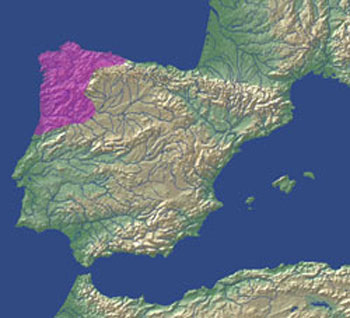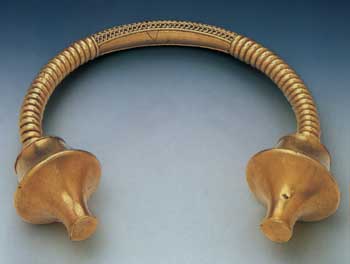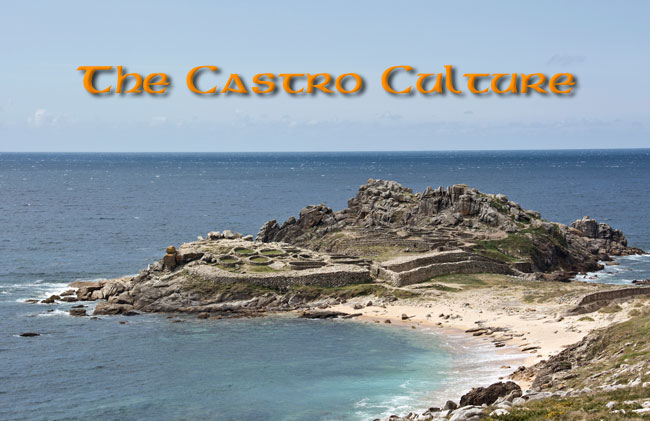
The term ‘Castro’ is used to define the Iron Age culture that predominated in the north-western part of the Iberian Penninsula, what is now northern Portugal and the Spanish regions of Galicia, Asturias, the Basque Country along with the western part of Castille and Leon (see map, right). It endured from the end of the Bronze Age until the Roman conquest, roughly from the 9th until the 1st century BC.
The Romans knew the inhabitants as the Gallaeci and, as the name suggests, they spoke a Celtic language, related to those spoken by the Gallic tribes of what is now France.along the Atlantice littoral, from Spain to Brittany, Cornwall and the shores of the Irish Sea. There had been close cultural connections between these areas ever since the Megalithic Age (the 5th to 3rd millennium BC).
The region is rich in mineral resources— especially copper, tin, silver and gold— all of which were in great demand in antiquity. By the end of the 2nd millenium BC, Phoenician traders from the eastern Mediterranean had ventured into the Atlantic, eager to do business. Control over the production and distribution of such valuable commodities was a very competitive business and the appearance of castros is undoubtedly connected with it.
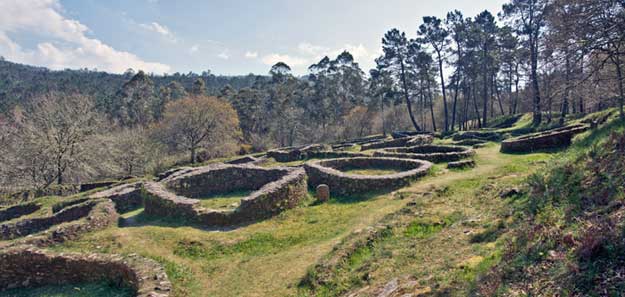
Castro de Borneiro, Galicia
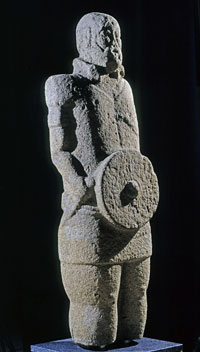 The term ‘castro’ is used to describe the fortified settlements found throughout the region. Typically they consist of a number of round or oval stone houses enclosed by a substantial stone wall and an outer ditch. They tend to be sited with an eye to defence, such as hilltops or rocky promontories, to protect the mine workings and provide secure landing places for merchant vessels.
The term ‘castro’ is used to describe the fortified settlements found throughout the region. Typically they consist of a number of round or oval stone houses enclosed by a substantial stone wall and an outer ditch. They tend to be sited with an eye to defence, such as hilltops or rocky promontories, to protect the mine workings and provide secure landing places for merchant vessels.
The Castro Culture shares many elements with the Celtic civilization that was developing in Central Europe, France and northern Italy at about the same time. These typically were aristocratic, warrior societies with an emphasis on weaponry and personal adornment. Items, such as the golden torc from Burela in Galica are very similar to examples found at contemporary sites in the rest of Europe.
The middle part of the first millennium BC has been called the Age of Expansion of the Celtic world. Rome was sacked by migrating Celtic tribes in 390 BC and other groups encountered Alexander the Great in the Balkans some 60 years later. It is entirely possible that similar population movements were responsible for introducing the Celtic language and some aspects of their material culture into Spain and Portugal. However, many other elements, the architecture and town-planning, derive from indigenous traditions that go well back into the Bronze Age.
